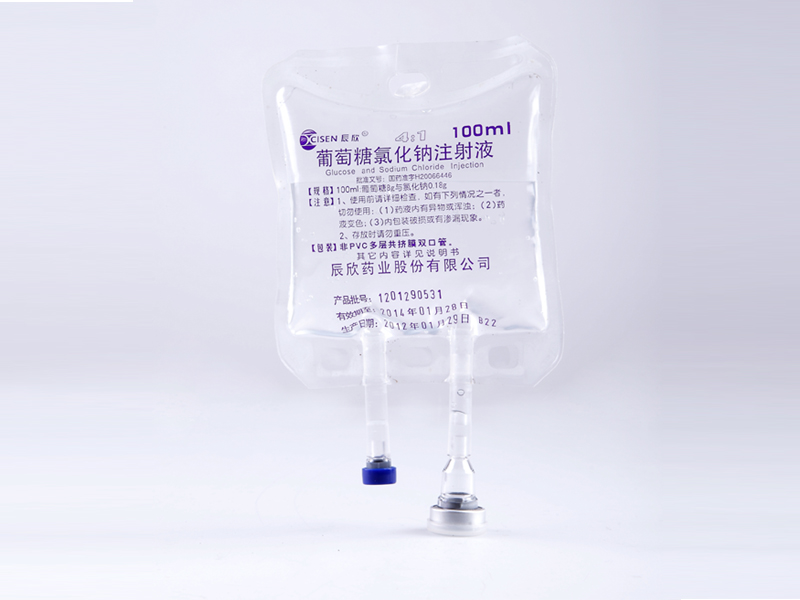Description: Glucose and Sodium Chloride Injection for Children are sterile and nonpyrogenic. It is colorless liquid clarity. This product is the pediatric humoral complementary medicine. Mainly used in the infusion for operation, and maintain such as fever, pneumonia caused by pediatric vomiting, diarrhea and dehydration
Pharmacological effects: When administered intravenously, these solutions provide a source of water, carbohydrate and electrolytes. Solutions which provide combinations of hypotonic or isotonic concentrations of glucose and of sodium chloride are suitable for parenteral maintenance or replacement of water and electrolyte requirements with minimal carbohydrate calories. Solutions containing carbohydrate in the form of glucose restore blood glucose levels and provide calories. Carbohydrate in the form of glucose may aid in minimizing liver glycogen depletion and exerts a protein-sparing action. Glucose injected parenterally undergoes oxidation to carbon dioxide and water. Sodium chloride in water dissociates to provide sodium (Na+) and chloride (Cl-) ions. Sodium (Na+) is the principal cation of the extracellular fluid and plays a large part in the therapy of fluid and electrolyte disturbances. Chloride (Cl-) has an integral role in buffering action when oxygen and carbon dioxide exchange occurs in the red blood cells. The distribution and excretion of sodium (Na+) and chloride (Cl-) are largely under the control of the kidney which maintains a balance between intake and output. Water is an essential constituent of all body tissues and accounts for approximately 70% of total body weight. Average normal adult daily requirements range from two to three liters (1.0 to 1.5 liters each for insensible water loss by perspiration and urine production). Water balance is maintained by various regulatory mechanisms. Water distribution depends primarily on the concentration of electrolytes in the body compartments and sodium (Na+) plays a major role in maintaining physiologic equilibrium.
Indications: Glucose and Sodium Chloride Injection for Children is the pediatric humoral complementary medicine. Mainly used in the infusion for operation, and maintain such as fever, pneumonia caused by pediatric vomiting, diarrhea and dehydration
Precautions: Solutions containing glucose should be used with caution in patients with known subclinical or overt diabetes mellitus. Caution must be exercised in the administration of parenteral fluids, especially those containing sodium ions to patients receiving corticosteroids or corticotropin. Do not administer unless solution is clear and container is undamaged. Discard unused portion. Frequent monitoring of serum glucose concentrations is required when dextrose is prescribed to pediatric patients, particularly neonates and low birth weight infants. In very low birth weight infants, excessive or rapid administration of dextrose injection may result in increased serum osmolality and possible intracerebral hemorrhage. Sodium ions are known to be substantially excreted by the kidney, and the risk of toxic reactions may be greater in patients with impaired renal function.
Adverse reaction: febrile response, infection at the site of injection, venous thrombosis or phlebitis extending from the site of injection, extravasation and hypervolemia.

